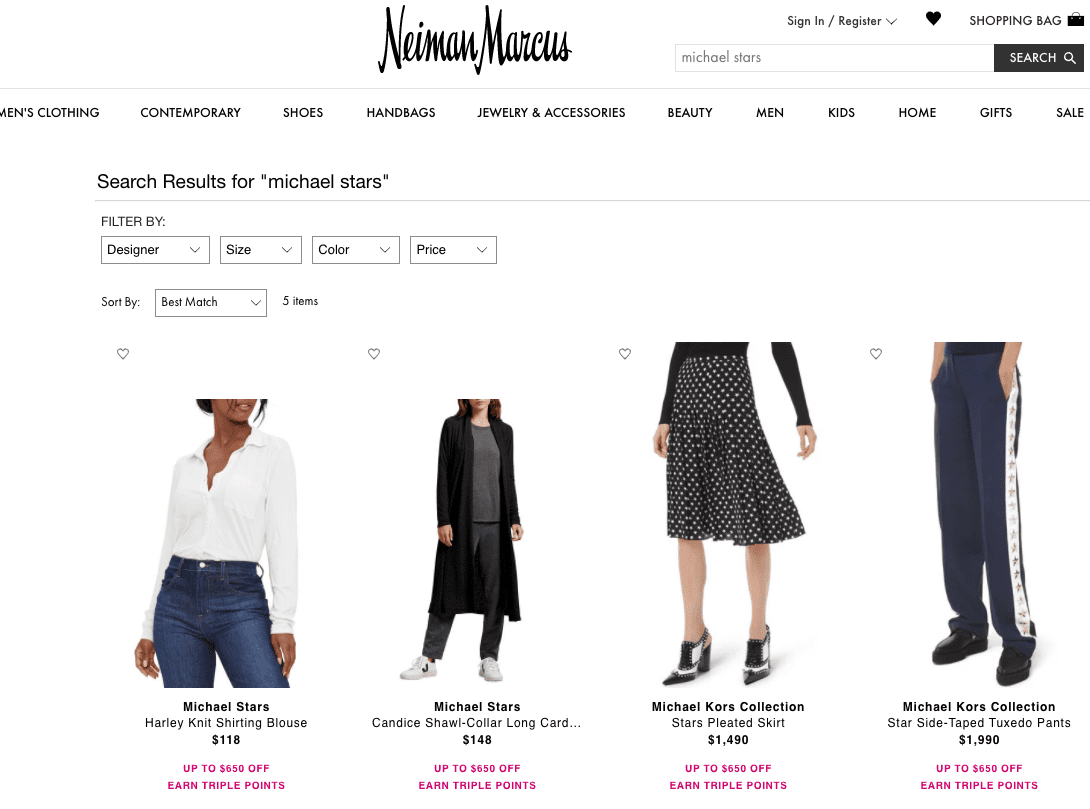Diffusion Confusion: Conflicts In Product Characterizations and Search Precision, Part 3
How to manage diffusion in brand concepts to deliver relevant search results to shoppers.
This post is the last of a three-part series on the challenges of diffusion in your product catalogue. You’ll want to read part 1 if you haven’t already. It’s an introduction to diffusion and diffuse categories. I’d also recommend part 2 that includes recommendations on diffusion in romance copy. This three part series offers ideas and tips on how to improve search precision in your online store through a close inspection of content.
In this post we’ll focus on diffusion in brand concepts. Read on for recommendations on tuning search to deliver a personal, delightful online shopping experience.
Diffusion in Brand Concepts
Unfortunately, diffusion confusion doesn’t only happen in diffuse categories or long product descriptions — it can happen with brands too. Let’s use “Red Valentino” as an example. When someone searches “red valentino” you expect that they want the brand “Red Valentino” rather than red products by Valentino. Or do you? It’s hard to say when there is diffusion between the brand spectrum and the color spectrum.
Consider a different example. Suppose you search for “bra” and the retailer carries the brand “Barely There Bra.” Just because the brand name matches the search query, it doesn’t mean Barely There Bras should show up before products from Wacoal, Natori, or DKNY which are more traditional bras.
What about brand names like “Michael by Michael Kors”? Michael being the more accessible, price-friendly line, and Michael Kors being the high-end designer line. Matching a query for “Michael” to “Michael Kors” could result in sticker shock for shoppers who are looking for the more affordable brand. Most luxury brands have diffusion issues, just take a gander at the Neiman Marcus brand directory.
A query for “michael stars” at Neiman Marcus brings back products by the brand “Michael Stars” but also products from Michael Kors that features star shaped prints and embellishments. |
 |
The point is that over reliance on any one field is problematic, but unlike category and product diffusion, you would never consider not indexing brand names. So what do you do?
Personalize Results Using Signals
Customer signals come in very handy in solving this problem. A merchandiser might be absolutely certain that “red valentino” means the brand Red Valentino and not Valentino in red, but what if customers click, cart, and buy Valentino in red? In that case, we want the customer signals to override the merchant opinion. It’s critical that search systems balance editorial perspective with customer behavior signals in order to produce a good user experience.
Every retailer will handle this search tool tuning differently. And they should, considering each customer base has different expectations and buying habits.
If you’re interested in learning more about how Lucidworks solves diffusion confusion for retailers like REI, goop, and more, drop us a line.